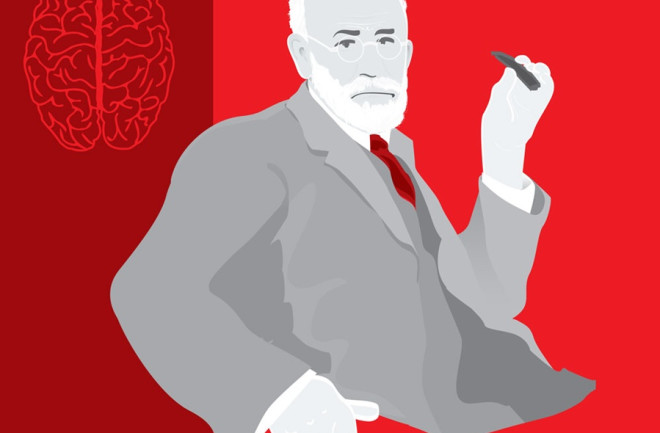The party is at a trendy Harlem restaurant, in the private rooms downstairs. It is crowded and, for a science event, glamorous. Many women are in sparkly cocktail dresses. Men are wearing expensive ties. Everyone has fashionable eyewear. Over at the bar is the goateed Joe LeDoux, known for his groundbreaking research on fear, as well as for his rock ’n’ roll band of scientists. The celebrity chef who owns the restaurant is personally greeting guests.
This gathering is unusual for other reasons. A benefit for the Neuropsychoanalysis Foundation, it is celebrating the idea that psychoanalytic concepts like repressed impulses and unconscious drives remain important and relevant in this era of the neurobiological study of the brain. If that seems surprising, so will this: Sigmund Freud, the creator of psychoanalysis, actually began his career as a neurobiologist, dissecting the nerves of crayfish. But in his late 19th-century era, brain science was primitive. Even the basics of how a neuron worked were still mysterious. Freud abandoned objective science, developing a subjective approach to understanding the mind based on what his unhappy patients told him about their inner lives. Psychoanalysis, the discipline he created, began as a technique to help miserable people. It became the 20th century’s single most influential theory about the human mind.
Freud’s theory, which he formulated in the 1890s and revised repeatedly, was both comprehensive and radical. Its bottom line is that we do not know ourselves. In his formulation, the mind constantly generates powerful wishes that are repressed — shut down by our own internal censors before we even become aware of them. Much of what we do and think is shaped by these unconscious impulses, unbeknownst to us. Dreams, slips of the tongue and psychiatric symptoms are the result of desires distorted by the mental censors. In the “talking cure” — the practice of psychoanalysis — the therapist helps the patient notice these mental lapses, interpret the unconscious struggles they reflect and bring them into the light of self-awareness.
After Freud, psychoanalysis fractured into many schools of thought, but the idea of an inner world of unconscious conflict, and the notion that subjective experiences are meaningful and important, remain at the core of this view of human nature. Meanwhile, neurobiology — the scientific study of the physical brain — evolved in the other direction. Neuroscience focused on the nuts and bolts of the brain: how nerve cells communicate with electrical and chemical pulses, how brains learn and calculate and remember. But neuroscience avoided subjective experiences, sticking to what it could measure and observe.

